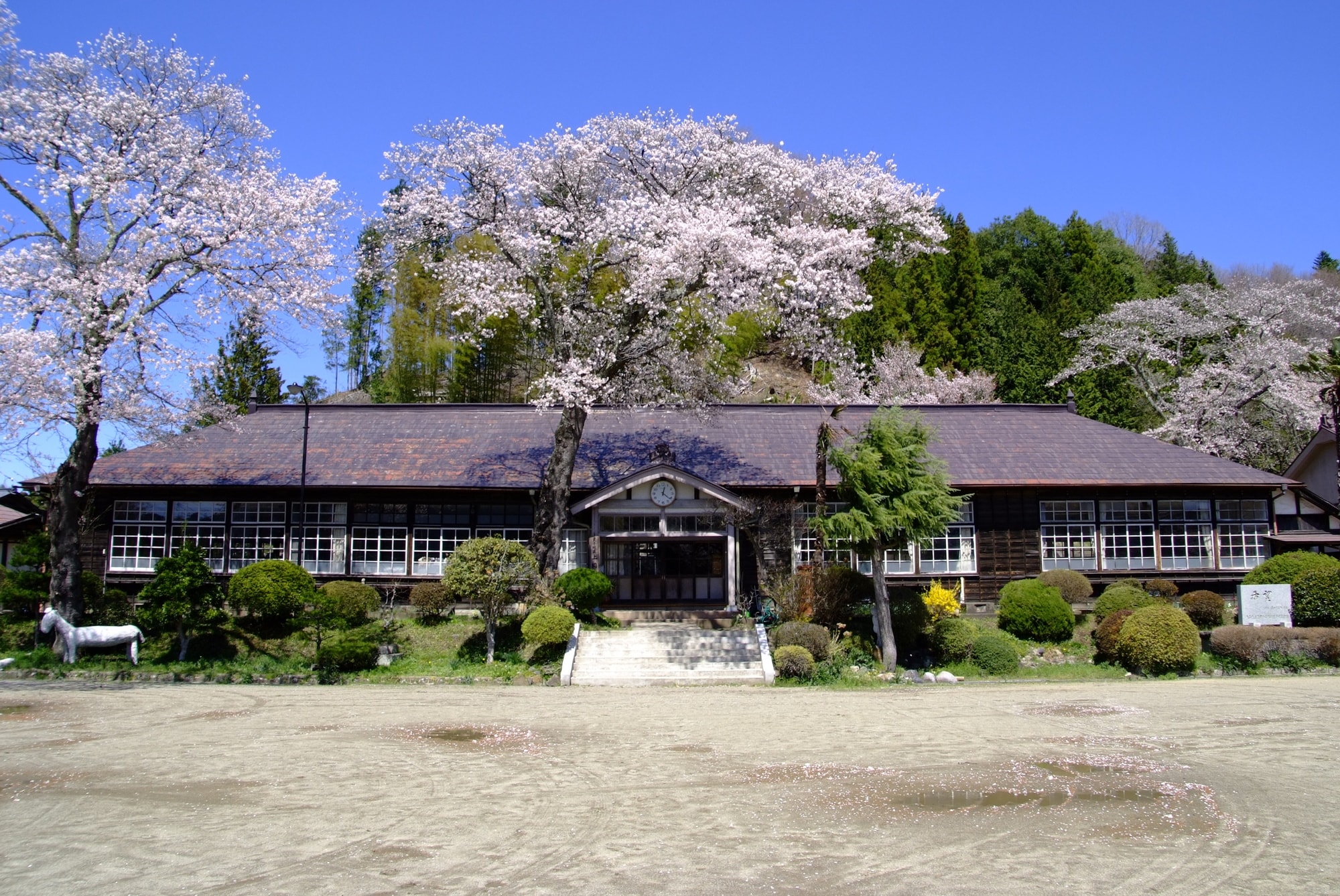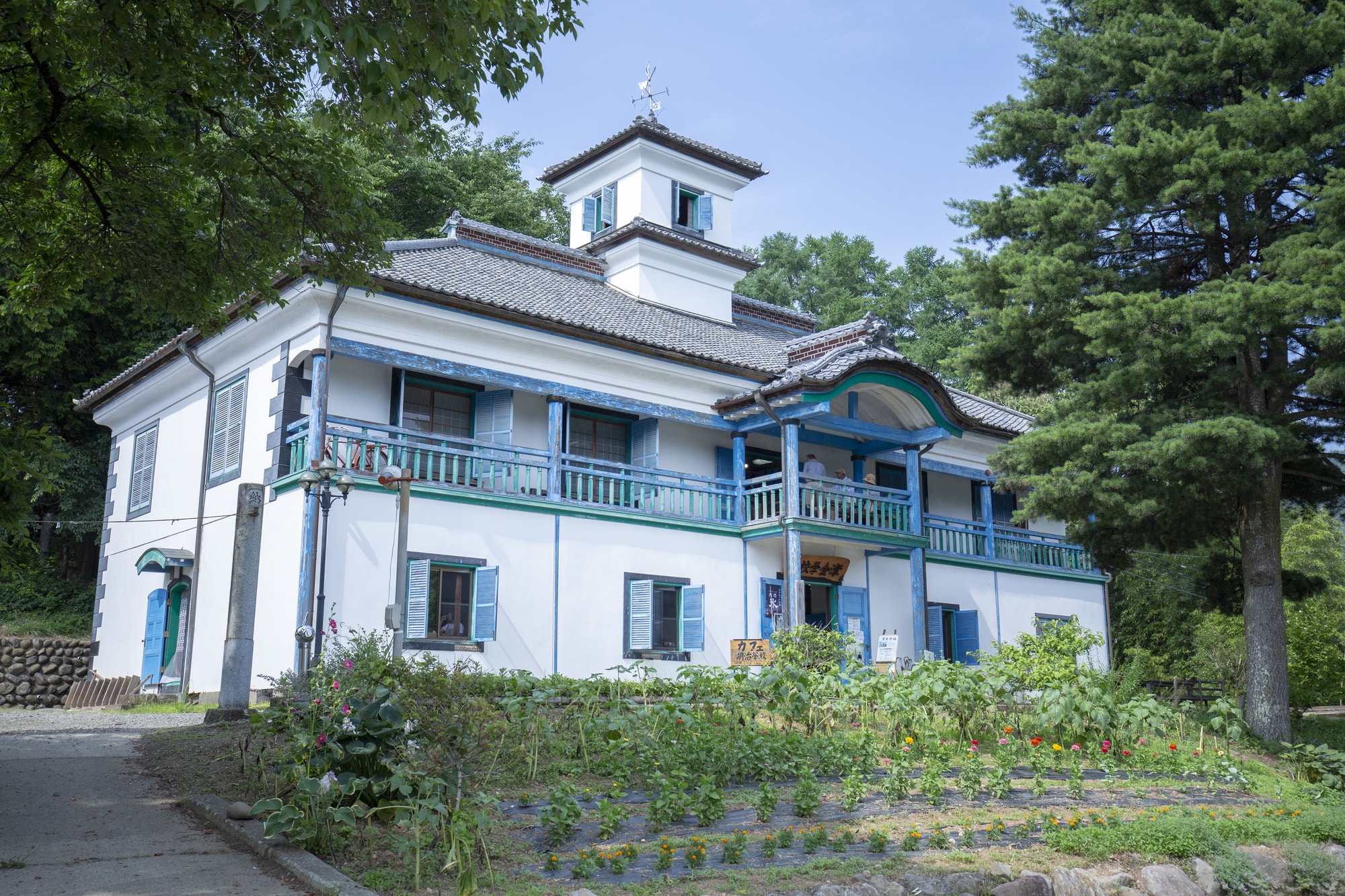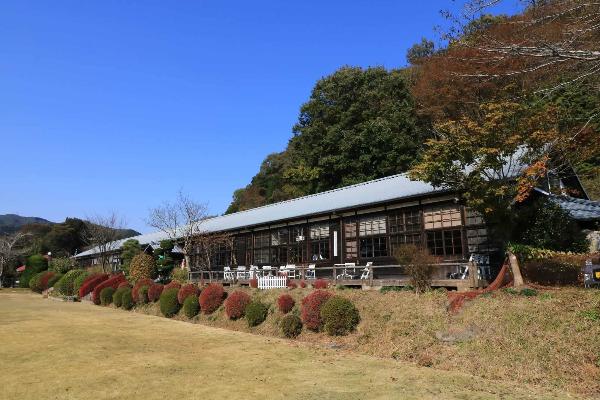- 7 Former Schools Reborn into Unique Tourism Venues
- 1. Omoide no Katabunko (Akita)
- 2. Old Uwaoka Elementary School (Ibaraki)
- 3. Daigo Oyaki School (Ibaraki)
- 4. Old Kizawa Elementary School (Nagano)
- 5. Oishii Gakko School
- 6. Akizuno Garten (Wakayama)
- 7. Muroto Schoolhouse Aquarium (Kochi)
- Conclusion
- Nearby
Due to the falling birthrate and a rapidly aging population, schools in Japan have been needing to close down. However, many unused school buildings are finding a new purpose – as tourist attractions.
Some of these closed schools serve as restaurants and cafes, accommodation sites, or even an aquarium. Here are 7 unused school buildings that have been reborn into brand new facilities while still retaining their traditional atmosphere.
A rapidly aging population and falling birthrate have rendered a great number of Japanese school buildings unnecessary, and ultimately caused them to close down. Later in their timelines though, some of these school buildings have been reborn into modern tourist attractions. This article will introduce 7 such renovated school buildings, that all in some way preserve the look of a Japanese school.
While all of these give visitors a look at the school buildings' interiors, some serve dishes that simulate school food, and others have even developed into accommodation facilities. Enter these abandoned school buildings and experience the Japanese school life that used to be!
7 Former Schools Reborn into Unique Tourism Venues
In recent years, the number of school closing down has been increasing rapidly.
According to the Ministry of Education, recent years have seen an approximate annual rate of 500 school closures. As a result, there are currently around 6,000 abandoned, unused school buildings throughout Japan. A great number of local initiatives have been gathering attention, as they work to renovate these abandoned buildings into tourist attractions such as inns and event spaces.
Here are 7 formerly abandoned schools in Japan, that have been reborn to find new lives as tourist attractions!
1. Omoide no Katabunko (Akita)

Omoide no Katabunko
Omoide no Katabunko sits on the bank of Lake Tazawa in eastern Akita prefecture. It is the building of Obonai Elementary School, which was closed in 1974. The building reopened in 2004 as an event hall.
There are three classrooms: one for first and second graders, the second for third and fourth graders and the third for fifth and sixth graders.

Classrooms at Omoide no Katabunko
You can find desks and chairs from back in the day.

School supplies
Retro school supplies, such as school bags and textbooks, are displayed.
Annually, in the end of May, the Tazawako Craft Market is held here. Artists gather at Omoide no Katabunko and sell handmade glassware, pottery, snacks and more.
Many of the works sold at the Tazawako Craft Market can only be found there.
2. Old Uwaoka Elementary School (Ibaraki)

Old Uwaoka Elementary School
The Old Uwaoka Elementary School can be found in the town of Daigo in northern area of Ibaraki prefecture.
The school was closed down in 2001. After closing down, the school building became well-known for bing used in several television shows, movies, and advertisements. It is also used as an event space for local events such as pottery and art workshops.

A classroom at the Old Uwaoka Elementary School
The wooden building was established in the Meiji Period (1868 – 1912).
The desks, blackboards and more are from those times.

Hallway
Even the hallways and windows retain their original form!
3. Daigo Oyaki School (Ibaraki)

Daigo Oyaki School
Also in the town of Daigo is the Daigo Oyaki School.
Daigo oyaki is a local dish of Daigo town, made by kneading miso into a flour-based dough, which is then baked.
Daigo Oyaki School was renovated from the unused building of the former Makinoji elementary school, which closed in 1996. The venue is used as a space for the sale of Daigo oyaki, as well as interactive experiences in which participants can try making their own oyaki.
The workshops take place within the school building, which was built all the way back in the Meiji Period (1868 - 1912)

Handmade oyaki
You can shape your oyaki in shapes such as hearts or stars, and paint them with natural food coloring, too. The flavor can be chosen from either apple or pumpkin.
4. Old Kizawa Elementary School (Nagano)

Old Kizawa Elementary School
The Old Kizawa Elementary School is located in Iida City in southern Nagano Prefecture. This two-storied wooden school building was built in 1932, and closed down in the year 2000. Currently the building is used as both a museum and event space, and visitors can freely see the interior.
The Yama-no-Toshokan ("library in the mountain") inside the building has 4,000 books for the public to read, and many of these are preserved samples from when the school was in operation. The individual classrooms have exhibits providing information on the local mountains, trains, and traditional festivals.
The classrooms have been used to film commercials, and some of them have been left behind with their filming sets, complete with the bags, desks, and chalkboard writing.

Inside a classroom
Being there, it feels as if the school children were just there, and could come back at any time.
5. Oishii Gakko School

Oishii Gakko School
Oishii Gakko School stands near the foot of Mount Yatsugatake in Yamanashi prefecture. It is a part of the Sandai Kosha Fureai-no-Sato, a collective name for three abandoned school buildings that were made in the Meiji (1868 - 1912), Taisho (1912 - 1926) and Showa Period (1926 – 1989).
Oishii Gakko was once Tsugane Elementary School. The school closed down in 1985, and reopened in 2000 as Oishii Gakko, meaning “delicious school”.
Because the three school buildings here were individually built in three different time periods, they were given the name "Sandai Kosha", meaning "school buildings of three ages".

School building from the Taisho Period
The Meiji-era and Taisho-era school buildings are respectively used as a historical museum and agricultural testing ground, while the Showa-era school building was reborn in the year 2000 as Oishii Gakko School.
Within the walls of Oishii Gakko School, you will find a restaurant, a bakery, and wholesale produce store - all great places to enjoy local vegetables and fruits.
Among them, the "Oishii Gakko School Lunch" is a hugely popular set meal that sells over 200 servings a day. The set meal is made to simulate cafeteria food of the time.
Your "school lunch" will be served to you in a section of Japanese restaurant "Furumiya", which recreates the look of an old-fashioned classroom.

The recreated classroom (photo courtesy: @shigeo0208)
The small wooden tables and chairs are originals from the old school building. Stuff your feet under one of these, and it'll take you right back to elementary school!
Today, the available meals were the "curry course" and "stew course".

Oishii Gakko School Lunch (photo courtesy: @shigeo0208)
The aluminum trays used to serve guests are also original pieces from the old elementary school, and are nostalgic reminders of the past for those who were children back then.
6. Akizuno Garten (Wakayama)

Akizuno Garten (photo courtesy: Akizuno Garten)
Akizuno Garten is located in southern Wakayama and is near the Kumano Kodo pilgrimage trail, a World Heritage Site
This venue was renovated from the old Kami-akizu elementary school, and opened in 2008 as a combined tourism facility. In the 2018 ranking of renovated school building venues by the Nihon Keizai Newspaper, Akizuno Garten was ranked number one in all of Japan.
With the relocation of Kami-akizu Elementary School, the two-storied wooden school building built in 1953 was renewed as the "experience ward".

Inside the hallway of Akizuno Garten
The classrooms are now used as event and exhibition spaces. In some of the classrooms, there are displays about the history and characteristics of mandarin oranges, a Wakayama prefecture specialty.
Across the school building, there is a new building that was built in 2008 to house a restaurant and accommodation facility. The building is characterized by a very deliberate design meant to blend in with the rest of the 65 year-old school building.
The restaurant, Mikan-batake, serves dishes made with local ingredients. There is also a dessert making experience area, Valencia-batake, where you can make and buy sweets made from mandarin oranges.
While staying here, you can also participate in mandarin orange and plum farming.
At the accommodation, there are seven rooms with a traditional Japanese layout. You can stay here as a hub for your Kumano Kodo visit too.
7. Muroto Schoolhouse Aquarium (Kochi)

Muroto Schoolhouse Aquarium
The final venue on this list is Muroto Schoolhouse Aquarium in eastern Kochi Prefecture. After the former Shina Elementary School closed in 2006, the abandoned building was renovated and repurposed in 2018 as an aquarium.
In just 3 months from its opening, the aquarium attracted over 60,000 guests and became a nationwide sensation.
Approximately 1,000 samples and 50 species of marine life are cared for and exhibited in the aquarium, and all of them were caught locally in fishing nets. Perhaps due to the nostalgia of the school building, the entire aquarium has a warm, welcoming atmosphere to it.

A turtle in the aquarium (photo courtesy: @cielm_van)
The biggest attraction of the Muroto Schoolhouse Aquarium is no doubt, the grand outdoor tank. Turtles and hammerhead sharks swim freely in this tank, which was made by repurposing the elementary school's 25m pool.

The grand outdoor tank, made from the elementary school's abandoned pool (photo courtesy: @cielm_van)
Muroto Schoolhouse Aquarium has no shortage of ideas when pleasing its visitors by creatively recycling old school equipment. Some tanks are made by hollowing out old vaulting boxes, and the outdoor hand-washing station is made into the interactive "touch pool" with a variety of shellfish and sea cucumbers.

The repurposed vaulting box (photo courtesy: @cielm_van)
The 3rd-floor library exhibits marine life-related books and a minke whale specimen. The classrooms preserve their original looks, completed with desks, chairs, a podium, and equipment such as a microscope and alcohol lamp.
It is extremely rare for an abandoned school building to be renovated into an aquarium. It is definitely worth a visit if on your trip to Kochi prefecture!
Get a Taste of the Japanese School Life that Used to be
With the rapid increase in abandoned school buildings in Japan, many localities have also taken action to utilize them, and renovate them into brand-new tourism venues that utilize the school building's warm atmosphere.
Experience the Japanese school life that used to exist within their walls as you enjoy local foods, interact with marine life, or spend a slow night of nostalgia. These abandoned school buildings have been renewed into unique Japanese cultural experience that go off the beaten path, and are quite unlike anything else!


















_600x400.jpg)















_600x400.jpg)


